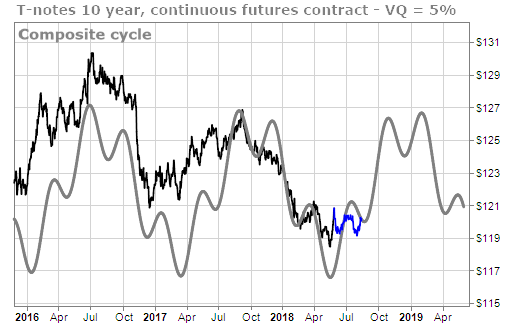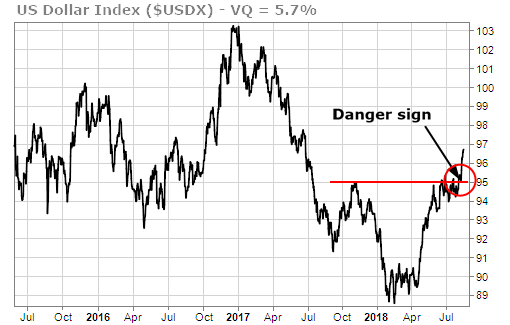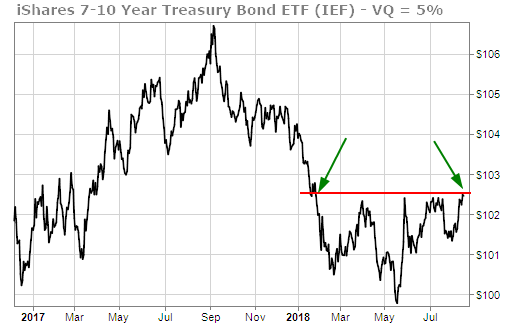On June 1, we wrote that “The Arrival of Trade War Makes U.S. Treasuries Attractive.”
In that piece, we pointed out (again) that U.S. small caps are a good place to be, thanks to (1) the strength of the U.S. economy, and (2) domestic insulation from trouble in the rest of the world.
We also noted that U.S. Treasury bonds could benefit from a “flight to safety” move if investors start to get nervous. When markets go into intense worry mode, USTs tend to rise as risk assets sell off and investment capital seeks out safe havens.
With the recent developments in Turkey, the case for a “risk-off” move into safe-haven U.S. Treasuries looks stronger than ever.
This goes back to a surge in the value of the U.S. dollar — and the potential for Turkey’s woes to act as a tipping point, spreading crisis contagion fear to other emerging market economies.
But before we get into that, let’s look at two factors supporting the bullish Treasury outlook …
The chart below shows the futures for the U.S. 10-Year Treasury Note. Below the price chart, you can see the positioning of the “smart money” (large commercial hedgers) in the 10-year note contracts. In terms of open long positions, the “smart money” indicator is more bullish than it has been in decades.

The next chart shows our proprietary time-cycle forecast for the 10-year T-Note futures. Once again, this outlook is strongly bullish. When you put these together, the probability is strong that a move higher in U.S. Treasuries, once underway, could be sustained through the rest of the year.

Getting back to Turkey: You might wonder why a Turkish financial crisis is bullish for U.S. Treasuries. It has to do with U.S. dollars — and the threat that a strong dollar poses to the global financial system.
Part of the reason Turkey is in big trouble right now comes down to huge amounts of borrowed money.
Over the past decade, both the Turkish government and the Turkish private sector borrowed hundreds of billions of dollars — and the loans they took out were mostly priced in U.S. dollars and euros.
If you borrow a large amount of money in a currency that is not your own, and the value of that currency rises, it means your debt payments have grown more expensive.
And if the currency you borrowed in rises sharply enough, and your loans denominated in that currency were big enough, the combined impact can force you into bankruptcy.
This is basically what happened in the “Asian currency crisis” of the late 1990s. A number of Asian countries borrowed heavily in U.S. dollars … and the value of the dollar surged sharply … and the countries that borrowed too much experienced economic crisis and a currency collapse.
That is what’s happening in Turkey right now as the U.S. dollar surges higher (see the U.S. dollar index chart below). The fear is that Turkey’s trouble could be “contagious” and shift to other emerging market countries too — because Turkey was far from the only country that borrowed heavily in U.S. dollars …

An instrument to monitor here is IEF, the 7–10 Year Treasury Bond ETF (as shown in the chart below). IEF is threatening to break out to the highest levels since January 2018 (about seven months ago). If you see IEF moving higher in concert with the U.S. dollar, that’s a sign Turkey’s crisis woes are indeed contagious.

We’ve seen that the United States economy and stock market can ignore the rest of the world, but only up to a point. If things get ugly enough, all risk assets could be hit. And U.S. Treasuries could rise sharply if that happens, making the 10-year note a potential hedge against new crisis.
We’re monitoring IEF, the 10-year note Futures, and the U.S. dollar, among other instruments.
We’ll keep you posted if we see compelling new developments …





